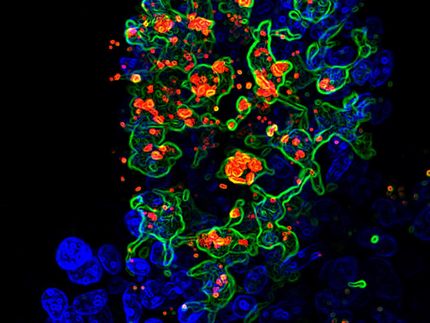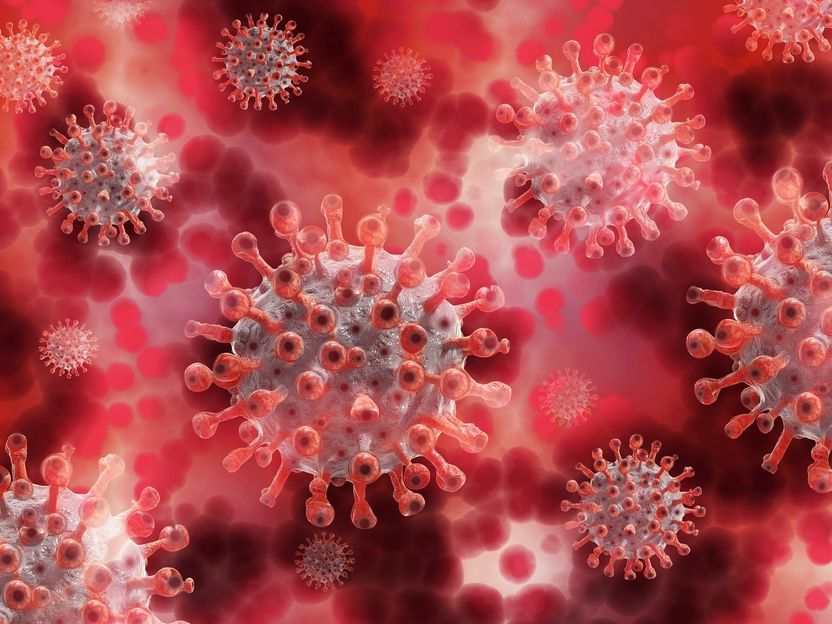Dangers of desert dust: New diagnostic tool for valley fever
Advertisement
On July 5, 2011, a massive wall of dust, ("haboob," in Arabic), blanketed Phoenix, Arizona, creating an awesome spectacle, (or stubborn nuisance, depending on your perspective). Dust storms are a common occurrence in the arid desert environments of the American Southwest.
But windborne dust can be a serious health risk, lofting spores of a sometimes-lethal fungus known as Coccidioides. The resulting ailment, known as coccidioidomycosis or valley fever, has been perplexing researchers since it was first described in 1892. It is currently on an alarming ascent in the United States.
Dr. Stephen Albert Johnston, Krupa Navalkar and their colleagues at Arizona State University's Biodesign Institute have been investigating Valley Fever. Navalkar is the lead author of a new study describing a promising strategy known as immunosignaturing, which can provide clinicians with an accurate identification of valley fever, a potentially serious affliction that is often misdiagnosed.
"The incidence of this disease is seemingly low due to non-sensitive diagnostic assays," Navalkar says. As Johnston further notes, "immunosignatures could easily change those false assumptions if made available in the clinical setting."
Currently, diagnosis is carried out through a technique known as immunodiffusion, which tests the blood for antibodies against Coccidioidal antigens. As the authors note, such tests are less than satisfactory, with a false negative rate as high as 50-70 percent. Around 5 percent of symptomatic patients display no measurable antibody levels to Valley Fever by immunodiffusion.
The current study describes an alternate method used to address the poor accuracy of immunodiffusion, applying an innovative new technique known as 'Immunosignaturing'. The technique can produce a detailed profile of system-wide immune activity from a small droplet of bloodtypically, less than a microliter.
To produce its detailed immune portrait or immunosignature, the technique uses a microarray platform. This consists of a glass slide imprinted with 10,000 peptides. Each peptide consists of a string of 20 amino acids, randomly arranged. The power of the technology resides in the fact that the randomly generated peptides are not based on natural antigens to Coccidioides or indeed, any disease. They are "unbiased" to the nature of particular disease antibodies and can therefore act as a sort of universal diagnostic.
When a droplet of antibody-containing blood is smeared across the microarray, the random peptides behave like naturally occurring antigens, binding with blood antibodies in a specific pattern. Global analysis of the resulting immunosignature is used to establish disease-specific blueprints of immune activity.
The method potentially offers much higher resolution and sensitivity to disease, compared with diagnostic tests measuring a single antibody-antigen binding event or a small ensemble of molecules.
In the first round of experiments in the current study, the group used immunosignatures to determine if Valley Fever infected individuals could be accurately distinguished from three other patient groups afflicted with bacterial or fungal infections.
Once an immunosignature for Valley Fever was established using the 10K peptide microarray, a smaller diagnostic array was composed from relevant diagnostic peptides. This smaller 96-peptide array was then tested for accuracy against the current immunodiffusion diagnostic standard.
The 10K peptide array successfully distinguished Valley Fever from 3 other infections, with 98 percent accuracy. Impressively, the method also was able to classify false negative Valley Fever patients in a blinded test, with 100 percent accuracy, easily outpacing existing immunodiffusion methods, which could only identify 28 percent of false negatives.
The smaller, 96 peptide diagnostic array showed less specificity than the 10K peptide array in terms of identifying false negatives. The authors propose that the larger 10K peptide array be used in initial screenings, followed by subarrays with reduced complements of carefully selected peptides, used for clinical diagnosis.
Immunosignaturing holds of promise for rapid, cost-effective and highly accurate diagnosis of Valley Fever. The versatile platform has the potential to separate Valley Fever patients from those afflicted with other bacterial or fungal infections. Making use of the same microarray, researchers can also identify false negatives with 100 percent accuracy.






















































